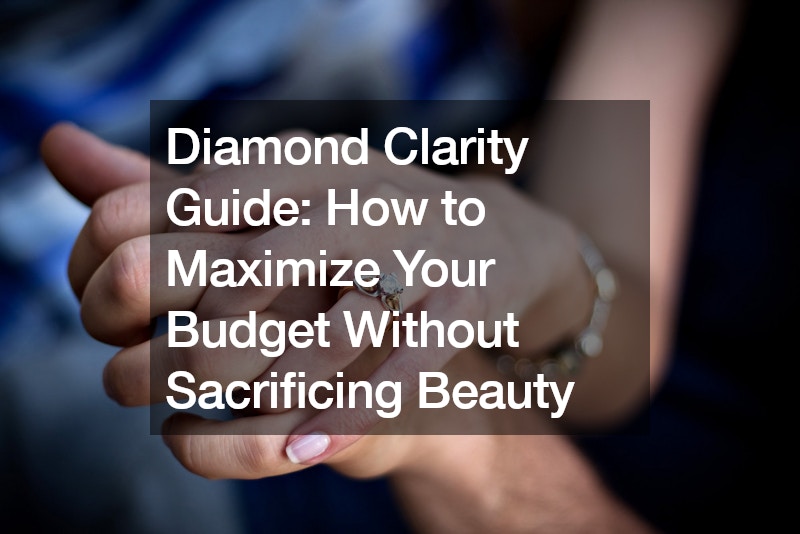
When purchasing a diamond, understanding clarity can significantly impact your budget and the overall beauty of your chosen gem. Clarity measures the presence of inclusions or internal flaws and blemishes or external flaws within a diamond. This guide will help you navigate the clarity scale, make informed choices, and maximize your budget without sacrificing the diamond’s appearance.
Understanding Diamond Clarity
Diamond clarity is graded based on the number, size, and location of inclusions and blemishes. The most commonly used clarity grading scale is from the Gemological Institute of America (GIA), which categorizes diamonds into five main groups:
- Flawless (FL) and Internally Flawless (IF): These diamonds have no inclusions or blemishes visible under 10x magnification. They are extremely rare and thus command the highest prices.
- Very, Very Slightly Included (VVS1 & VVS2): These diamonds have minute inclusions which are extremely hard to detect under 10x magnification. They are slightly more affordable than FL or IF diamonds but still very high in clarity.
- Very Slightly Included (VS1 & VS2): These diamonds feature minor inclusions challenging to see in VS1 and somewhat easier to spot in VS2 under 10x magnification. They offer a good balance of high clarity and reasonable cost.
- Slightly Included (SI1 & SI2): These diamonds have noticeable inclusions under 10x magnification, with SI1 inclusions often invisible to the naked eye, whereas SI2 inclusions might be visible without magnification.
- Included (I1, I2, I3): These diamonds have obvious inclusions visible to the naked eye, which can affect the diamond’s brilliance and durability.
Making Smart Choices
While higher-clarity diamonds are visually appealing, they also come with a significant price tag. However, you can still get a beautiful diamond without opting for the highest clarity grades by focusing on “eye-clean” diamonds. An eye-clean diamond appears flawless to the naked eye, even if it has inclusions that are only visible under magnification.
Here are some practical tips to maximize your budget while ensuring the beauty of your diamond:
- Set Minimum Clarity Standards: For diamonds under 2 carats, consider SI2 clarity. For larger diamonds, aim for at least VS2 clarity. For lab-grown diamonds, which are more affordable, VS2 is also a good starting point.
- Consider Flaw Locations: Choose diamonds with inclusions located on the facets rather than the table (top surface). Flaws on the facets can often be hidden by the setting prongs, making them less noticeable.
- Inspect Thoroughly: Always inspect diamonds using high-quality videos and check the GIA (or other reputable) certificate for a detailed description of the flaws. This will give you a clearer idea of how visible the inclusions are.
Avoiding Certain Flaws
Certain types of inclusions can significantly impact a diamond’s appearance and durability. Regardless of the clarity grade, avoid diamonds with the following flaws:
- Bearded Girdle
- Bruise
- Cavity
- Chip
- Indented Natural
For diamonds graded SI1 and SI2, also avoid feathers and clouds if they are the primary inclusions mentioned in the certificate.
Importance of Diamond Cut
Diamond cut plays a crucial role in how the diamond reflects light, which can enhance or detract from its overall beauty. For round diamonds, it’s recommended to opt for a Triple Excellent (XXX) cut, which signifies excellent cut, polish, and symmetry. This not only ensures maximum brilliance but also helps in minimizing the visibility of any inclusions.
Final Thoughts
By understanding the nuances of diamond clarity and making informed choices, you can find a stunning diamond that fits your budget. Focus on eye-clean diamonds with well-placed inclusions, inspect diamonds thoroughly, and avoid those with problematic flaws. Additionally, prioritize a high-quality cut to enhance the diamond’s brilliance. With these strategies, you can enjoy a beautiful diamond without the hefty price tag of the highest clarity grades.
.

